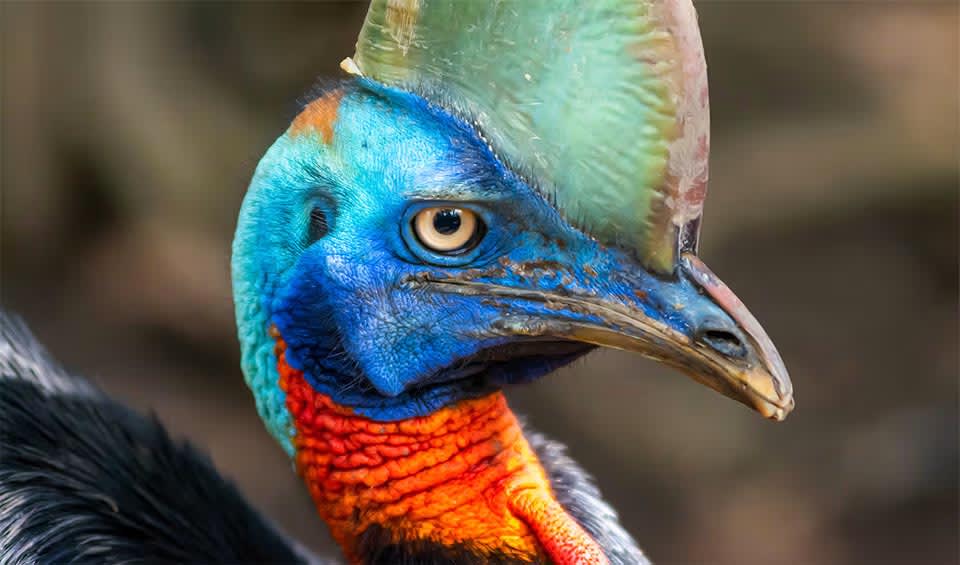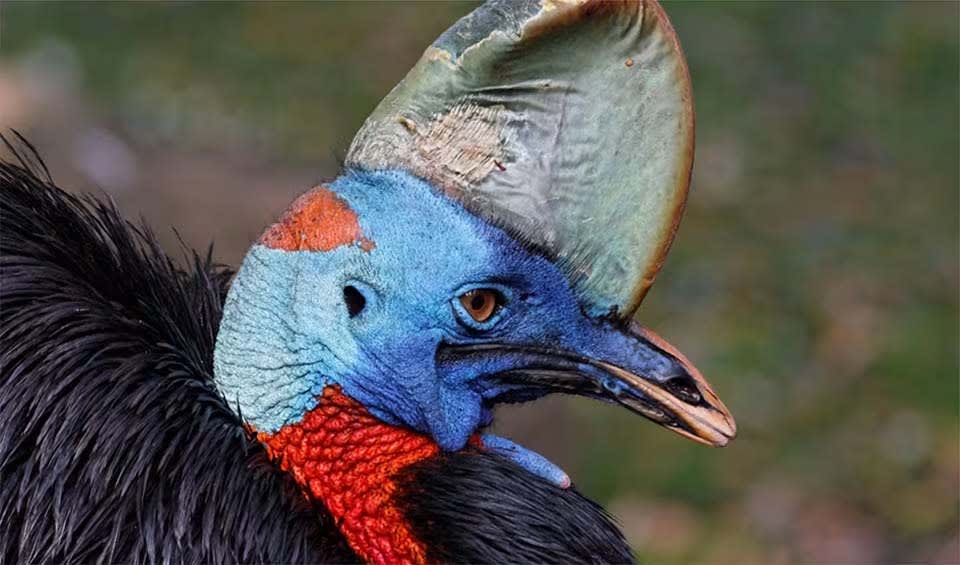Casuariidae – Cassowaries & emu
Large flightless birds native to Australia-New Guinea
A small group of large, flightless birds endemic to the Australasian region, specifically Australia and New Guinea. This family includes the emu, the only extant member of the genus Dromaius, and three cassowaries in the genus Casuarius: the northern cassowary, the southern cassowary, and the dwarf cassowary.
Emus are the second tallest living birds after the ostrich, reaching heights of up to 1.8 meters (6.2 feet). They are characterized by their long necks, strong legs, and shaggy, double-layered plumage, which helps insulate them from temperature extremes across various Australian habitats.
Cassowaries, on the other hand, are known for their striking appearance, including bright blue skin on their necks, red wattles, and a prominent casque or helmet atop their head. The function of the casque is still a subject of research, but it may play a role in protection as cassowaries navigate through dense rainforest undergrowth, as well as in species recognition and acoustic communication.
Both emus and cassowaries are powerful runners, capable of reaching high speeds and covering large distances quickly. They have strong legs equipped with sharp claws, which serve as formidable weapons for defense against predators or threats. Cassowaries, in particular, are considered one of the most dangerous birds to humans due to their powerful kick and aggressive nature when provoked.
In terms of reproductive behavior, emus and cassowaries share a common trait where the male assumes responsibility for egg incubation. In emus, females may court multiple males during the breeding season and can become quite aggressive towards other females. After laying a clutch of large, dark green eggs, the female departs, leaving the male to incubate the eggs for about eight weeks. During this period, male emus and cassowaries fast and rely on stored body fat, rarely leaving the nest and dutifully turning the eggs until they hatch.
Both families of birds play significant roles in their ecosystems. Emus are important seed dispersers, consuming a wide variety of plant material, while cassowaries are considered “keystone species” in rainforest ecosystems due to their role in seed dispersal, particularly of large fruits that few other animals can process.
Genera in this family
Fruit-eating, bad-tempered birds occupying rainforests and the savannas of Australia and New Guinea
Second tallest flightless bird, and the unarmed winners of Australia’s Emu-war



